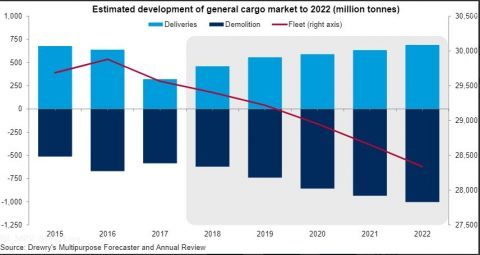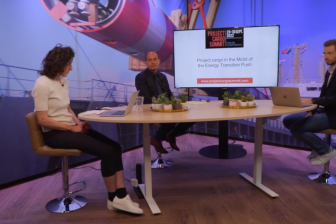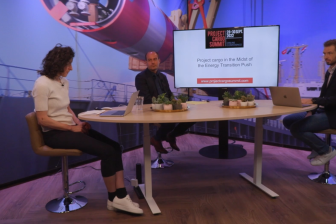
Multipurpose shipping: conditions are ripe for recovery
Multipurpose shipping has started 2018 on a confident footing and is forecast to recover further on rising demand, contracting vessel supply and lessening threats from competing sectors, according to the latest edition of the Multipurpose Forecaster and Annual Review report published by global shipping consultancy Drewry.
The multipurpose shipping market, which comprises both breakbulk and project cargo sectors, has struggled over the last few years but conditions are now ripe for recovery. Dry cargo demand is growing, with a number of drivers reporting improving conditions, whilst the multipurpose fleet is contracting as older, smaller, less heavy lift capable tonnage is weeded out.
Renewed optimism
‘This year has started with renewed optimism and it is Drewry’s belief that the market has finally turned that corner,” says Drewry’s lead analyst for the multipurpose sector Susan Oatway. “Rate rises are never stratospheric in this sector, but we believe a steady growth of around 2-3% per year is possible over the forecast period.’
However, due to the diversity of drivers that supports this sector there are still some concerns that could impact the outlook over the medium term. The first of these is the imposition of tariffs on US steel imports but Drewry has concluded that the impact will be limited. The 45 million tonnes of steel imported into the US on a yearly basis represents just 8% of the global trade. And many countries have now been exempted from tariffs, including the two largest US suppliers, Canada and Mexico. Furthermore, under certain scenarios, alternative trading patterns could lead to an increase in tonne-mile demand.
Demolition
Then there is the IMO deadline to implement a 0.5% sulphur cap on marine fuel from 2020. Owners are looking at three costly measures for compliance. They can either install scrubbers, use low-sulphur fuel, which is more expensive, or switch to LNG fuelled vessels. Drewry’s believes that for the older, simpler vessel this could be the impetus needed to send overage vessels for demolition since almost 10% of the fleet is over 30 years old.
The simple multipurpose fleet (vessels with lift below 100 tons) has already started to contract at a rate that is affecting the whole fleet. However, Drewry believes that the future is with the project carrier sector, i.e. those vessels with lift greater than 100 tonnes.
‘Some 80% of all newbuildings over the last five years have heavylift capability, and at least 70% of the orderbook has this capability. The project carrier fleet is growing, but it will be some time before it reverses the decline in the overall multipurpose fleet,” concludes Oatway.
Susan Oatway will go into the future of multipurpose shipping at the Project Cargo Summit. See for the conference program and to register.



